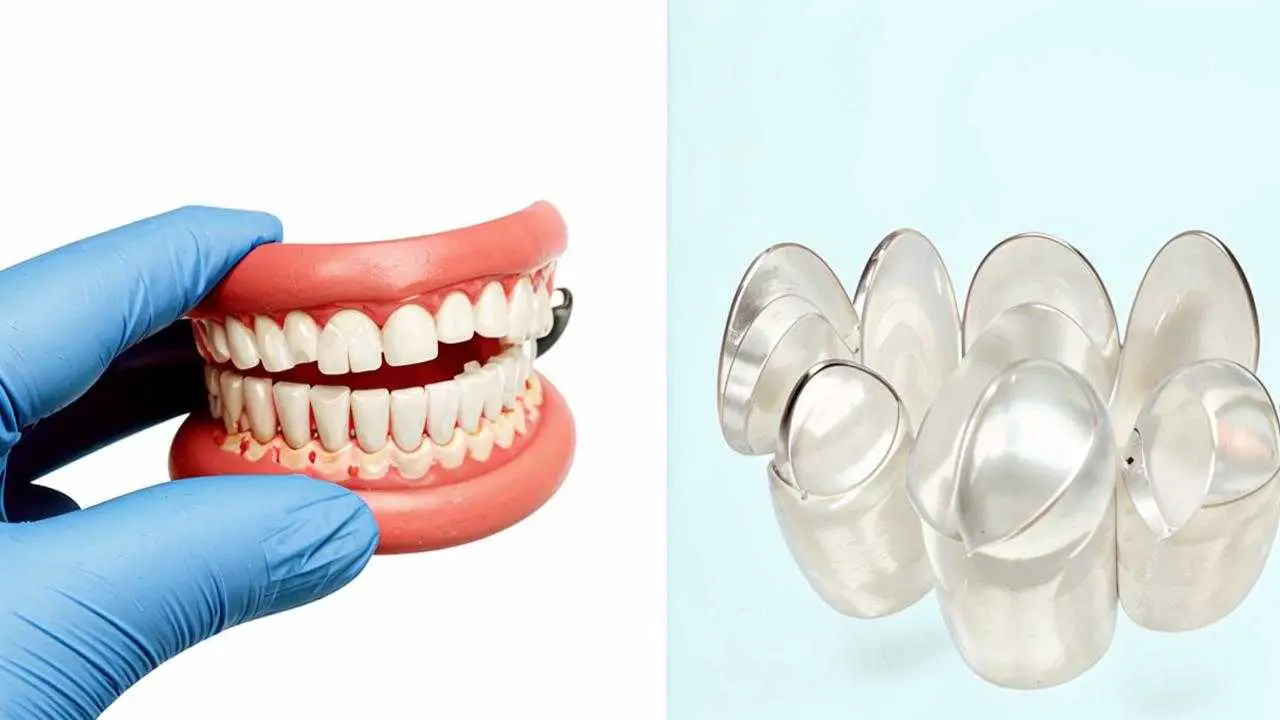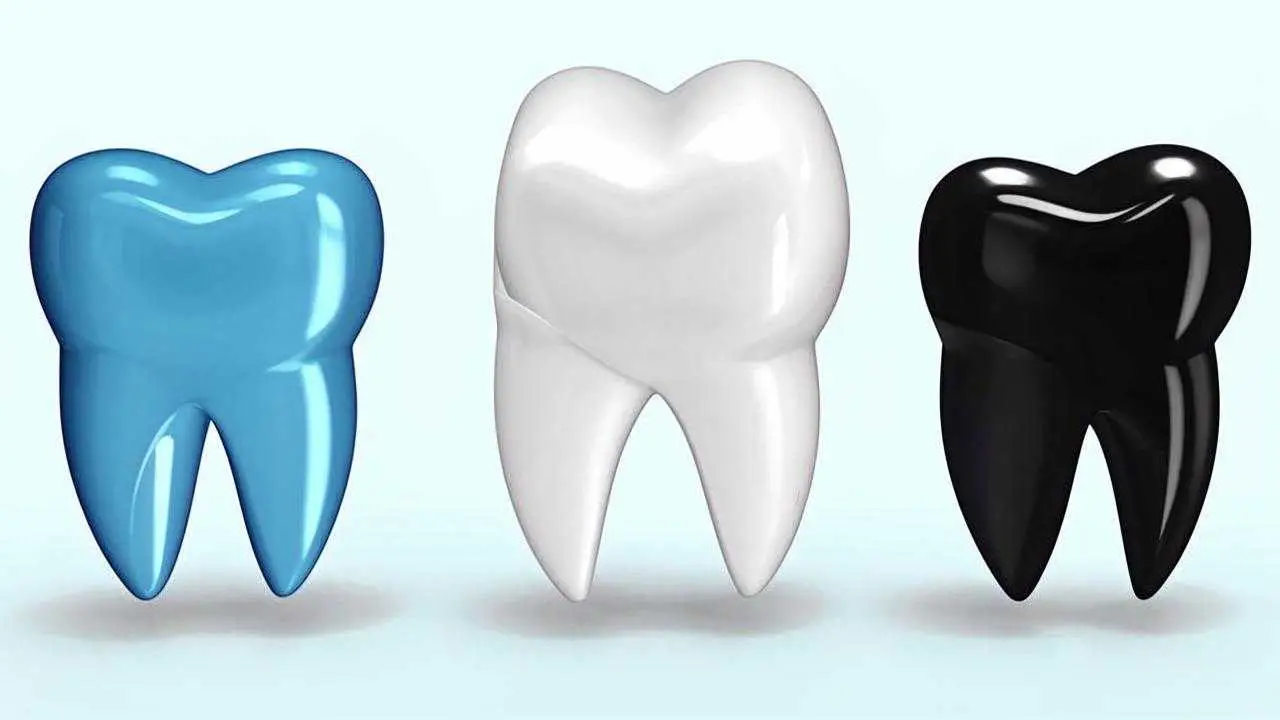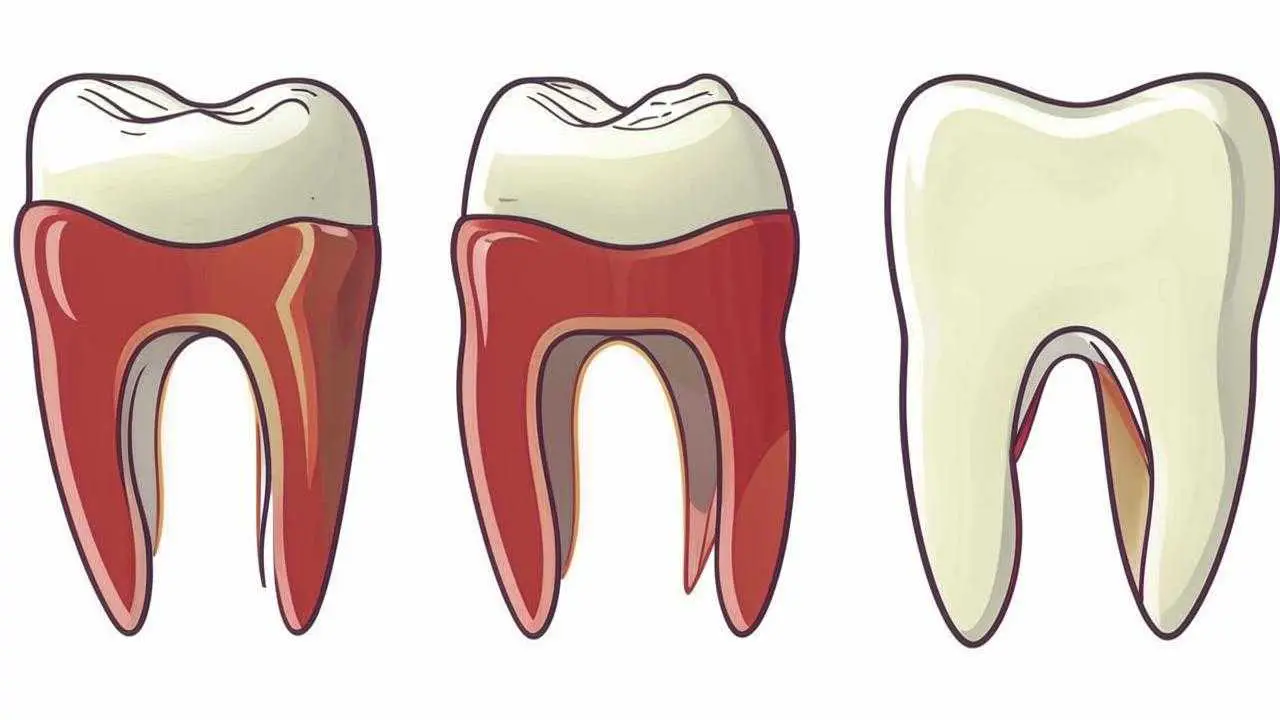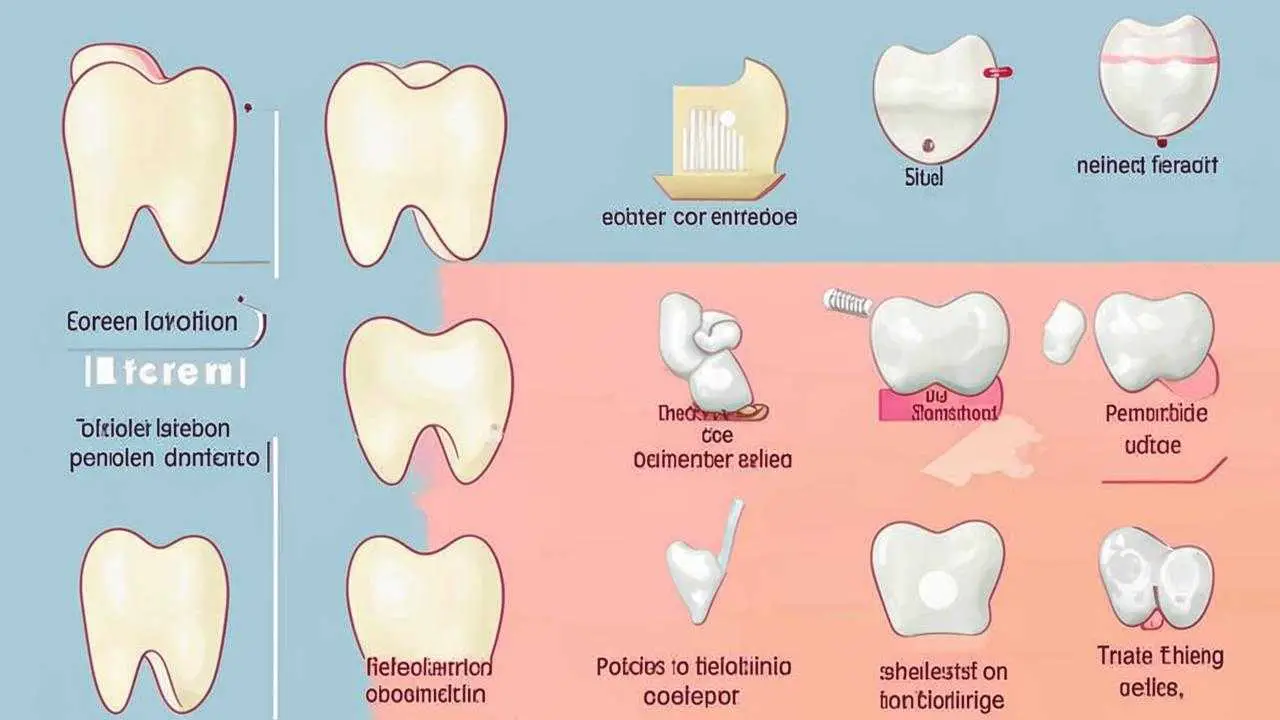أصبحت ابتسامة هوليوود معياراً يُسعى إليه في جميع أنحاء العالم. وبفضل مواد طب الأسنان الحديثة، أصبح من السهل جداً الحصول على مثل هذه الابتسامة. ستجعل التطعيمات الخزفية على الأسنان أو الفينير أو اللومينير صف الأسنان متساويًا ولون الأسنان - لا تشوبه شائبة. القشرة الخزفية هي أكثر خدمات طب الأسنان التجميلية شيوعًا. في بعض الحالات، يسمح لك بالاستغناء عن ارتداء تقويم الأسنان أو غيرها من الهياكل التقويمية لفترة طويلة. يقدّر المرضى الألواح الخزفية لسرعة تركيبها. يمكنك إبهار الآخرين بابتسامتك في أقل من أسبوعين. أما بالنسبة لألواح اللومينير، فإن الفترة أطول قليلاً، شهر ونصف.
الفينير واللومينير - ما الفرق بينهما؟
من الناحية الفنية، كلا النوعين من المنتجات عبارة عن تطعيمات سيراميك على الأسنان. وهما يختلفان في المقام الأول من حيث السُمك ومواد التصنيع ودواعي الاستخدام. يكمن الاختلاف الرئيسي في تحضير السطح قبل التركيب. بالنسبة للقشرة، يتم تحضير الأسنان وإزالة الطبقة العلوية من المينا. ولذلك، فإن عملية التركيب لا رجعة فيها. اللومينير رقيقة جداً بحيث يتم تركيبها بدون طحن. يمكن التنازل عن اللومينير إذا رغبت في ذلك.
لومينيرز
ألواح رقيقة مصنوعة من مادة سيراميك مطورة خصيصاً تسمى لومينيرز سيرينات. تركيبها سري للغاية لدرجة أن اللومينيرز مصنوع فقط في مختبر شركة DenMat في الولايات المتحدة الأمريكية. يحدث ذلك بطريقتين.
1. في أي بلد في العالم، يتم عمل انطباعات فك المريض في أي بلد في العالم. يتم إرسالها إلى الولايات المتحدة الأمريكية. وهناك، يتم استخدام سيراميك السيراميك لصنع اللومينير الذي يكرر بدقة تشريحية شكل أسنان المريض. يتم إرسال اللومينير النهائي مرة أخرى.
مزايا هذه الطريقة: تطعيمات رقيقة جداً وقوية يمكن أن ترضي صاحبها لمدة 20-25 سنة. السلبيات: فترة انتظار طويلة (حوالي 6 أسابيع) واستحالة الاستبدال السريع. إذا تم تقشير الصفيحة أو تقطيعها، سيتعين عليك الانتظار لمدة شهر ونصف للحصول على واحدة جديدة.
2. مختبر دنمات يصنع مختبر دينمات عالمي ثنائي لومينيرز. وهي مصنوعة من كتلة سيراميك مع إضافة مركب، وفقاً لقالب واحد. يقوم طبيب الأسنان بتركيب هذه اللومينير "الجاهزة" على أسنان المريض في فمه.
الإيجابيات: يتم تقليل فترة الانتظار بشكل كبير. السلبيات: لا يأخذ الإنتاج في الاعتبار الخصائص الفردية للأسنان. هذه الألواح أكثر سمكًا قليلاً (بمقدار 0.1 مم) ولونها أكثر غموضًا.
القشرة
مصنوعة من:
- البورسلين;
- سيراميك زجاجي
- ثاني أكسيد الزركونيوم
البورسلين جيد من الناحية الجمالية، ولكنه هش للغاية. الزركونيوم شديد الصلابة، ولكنه من الناحية الجمالية أدنى من الخزف. يجمع السيراميك الزجاجي بين القوة الكافية والصفات الجمالية العالية. المادة الأكثر شهرة هي ثنائي سيليكات الليثيوم. تحاكي المنتجات المصنوعة من مشتقاته، E-ماكس والإمبراطورة، خصائص المينا الطبيعية العاكسة للضوء. وتتراوح درجات الألوان من الشفافية إلى غير الشفافة (غير اللامعة)، بحيث يمكن إخفاء حتى التغيرات اللونية الواضحة.
القشرة الخشبية فائقة الرقة أو القشرة الخشبية فائقة الرقة
سمح ظهور السيراميك الزجاجي بتطوير تكنولوجيا لإنتاج قشور خشبية تضاهي اللومينير في سمكها. وبما أن اسم لومينيرز هو اسم حاصل على براءة اختراع، فقد أصبح يُطلق عليها اسم ألتراينيرز. وهذا يؤكد على الاختلاف عن القشرة الكلاسيكية ولا يكرر اسم الألواح من الولايات المتحدة الأمريكية. وهي مصنوعة من سيراميك E-max. لا تقل قوة الكسر في سيراميك E-max عن سيراميك Cerimate، وهناك المزيد من خيارات الألوان.
الفرق بين الفينير واللومينير
القشرة | لومينيرز | |
المواد | الزجاج والسيراميك والزركونيا والبورسلين | سيراميك خزفي |
السُمك | 0.3 - 1.0 مم | 0.2 - 0.3 مم |
المتانة | يعتمد على المادة | عالية |
التحضير | نعم | لا يوجد |
التصنيع | في أي مجتمع يوجد فيه معمل أسنان | في الولايات المتحدة الأمريكية (تُضاف تكاليف النقل إلى التكلفة) |
العمر الافتراضي | حتى 20 عاماً | حتى 25 عاماً |
وقت الإنتاج | من 10 إلى 14 يوماً | شهر واحد على الأقل |
إمكانية عكس العملية | لا رجعة فيه | قابل للعكس |
مؤشرات للاستخدام
صُممت التطعيمات الخزفية لتحسين الشكل الجمالي للابتسامة. والغرض الرئيسي منها هو إزالة العيوب التالية:
- تشققات وكسور في المينا;
- البقع العمرية;
- تغير لون الأسنان;
- الفجوات بين الأسنان;
- أسنان صغيرة;
- انحناء الأسنان المعتدل;
- أسنان بارزة
- ابتسامة اللثة.
الفرق بين القشرة الخشبية واللومينير هو أن الأخيرة يمكنها فقط تصحيح العيوب الخفيفة. فالصفائح رقيقة جداً بحيث تسطع البقع الداكنة من خلالها، ويمكن تفتيح الظل بدرجتين وليس أكثر.
عندما يكون من الأفضل الرفض من التراكبات
لا يُنصح بتركيب ألواح السيراميك بأي سماكة في بعض الحالات الطبية. وتشمل هذه الحالات:
- صرير الأسنان غير المنضبط (صرير الأسنان);
- 3-4 درجات من أمراض اللثة (الأسنان مرتخية بشكل واضح);
- طبقة رقيقة جداً من المينا;
- أكثر من 50% تدمير الجزء المرئي من السن (التاج);
- اضطراب العضة;
- انحناء واضح للأسنان.
مراحل التثبيت
خوارزمية تركيب تطعيمات السيراميك هي نفسها. عند تركيب اللومينير تستثنى مرحلة التحضير. وبخلاف ذلك، فإن الإجراءات متشابهة.
- التحضير. قبل تركيب الألواح يتم إجراء العلاج اللازم، والقيام بالتنظيف الاحترافي للأسنان. في حالة تركيب التطعيمات المفردة، يتم في بعض الأحيان تبييض الأسنان.
- اختيار اللون. في اللومينير محدودة، في القشرة - ضخمة. من الألوان الطبيعية إلى الأبيض الفائق، والتي لا توجد في الطبيعة.
- التحضير. هذه المرحلة هي فقط لقشرة الأسنان. يقوم طبيب الأسنان بإزالة طبقة من المينا مساوية لسمك التراكب ويشكل النتوء اللثوي. يضمن هذا العمل ملاءمة جيدة. لا يتم ترك فجوات ولا يوجد تسرب دقيق. يكون الانتقال إلى اللثة سلسًا.
- أخذ الانطباعات. الطريقة الكلاسيكية - على السيليكون. الطريقة الرقمية - باستخدام الماسح الضوئي. يتيح لك تصميم الابتسامة الرقمية رؤية النتيجة عندما لا يكون الفني قد بدأ العمل بعد.
- تصنيع التطعيمات. تبقى كيفية حدوث ذلك مع اللومينير سراً. لتصنيع القشرة يمكن مشاهدتها على يوتيوب. يتم استخدام تقنية وضع طبقة تلو الأخرى أو الضغط أو الطحن.
- التثبيت. يتم تثبيت قشور الفينير واللومينير على الأسنان الأمامية بنفس الطريقة، فقط المواد اللاصقة مختلفة. يتم إزالة الشحوم من الأسطح وتجفيفها ومعالجتها بتركيبة خاصة (الترابط). على السطح الداخلي للصفيحة وعلى المينا، يتم وضع أسمنت الأسنان والضغط عليها بإحكام مع بعضها البعض.
أيهما أفضل - القشرة أم اللومينير؟
كل قشرة مجهرية لها مزاياها وعيوبها. العيب الرئيسي للقشرة هو التحضير. ومن ناحية أخرى، فإن الطحن هو الذي يساعد على تحقيق ملاءمة محكمة.
يحافظ اللومينير على مينا الأسنان، ولكنه يعمل على تكبير الأسنان بصرياً. وهذا أمر جيد للأسنان الصغيرة، ولكن إذا كانت أسنانك كبيرة بشكل طبيعي، فإن التأثير يكون مفرطاً.
المقارنة في السُمك لصالح قشرة اللومينير، ولكن القشرة فائقة النحافة تقترب بثقة من نفس السُمك. ولكن فيما يتعلق باختيار اللون، فإن القشرة اللومينير هي الرائدة بلا شك.
الاختلافات في السعر كبيرة جدًا، بالإضافة إلى ذلك، في حالة القشرة، هناك خيارات. عادةً ما تكون التراكبات الفلسباتية أرخص، والزركونيوم - أغلى ثمناً، لكن أيًا منها لا يزال لا يقارن بتكلفة اللومينير. هذه هي أغلى التطعيمات.
يعتمد اختيار التطعيمات على العديد من العوامل. يتخذ طبيب الأسنان قرار تركيب القشرة أو اللومينير مع مراعاة الحالة السريرية المحددة. تتاح له الفرصة للاختيار من بين عدة خيارات لتلبية احتياجات المريض وإجراء الأطراف الصناعية بأقصى فائدة.



